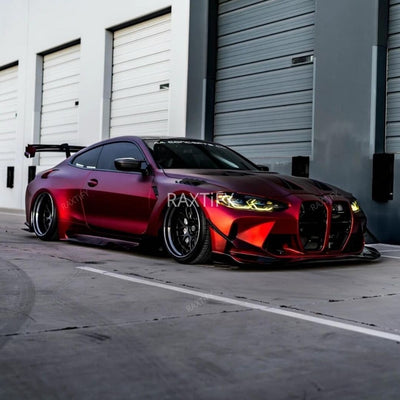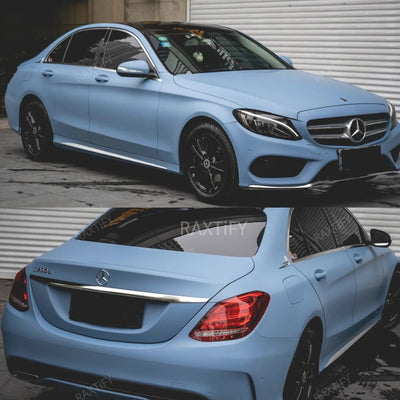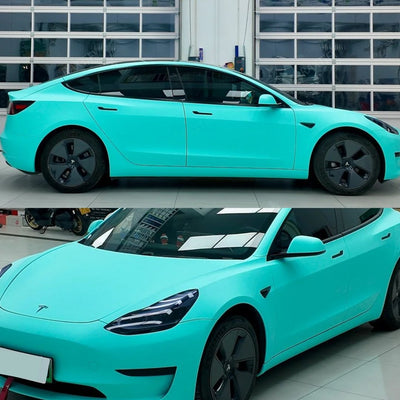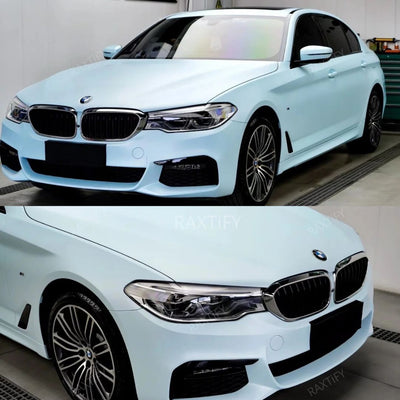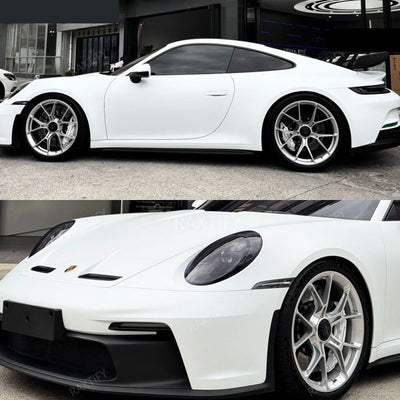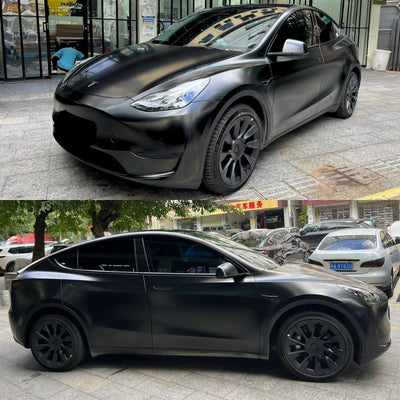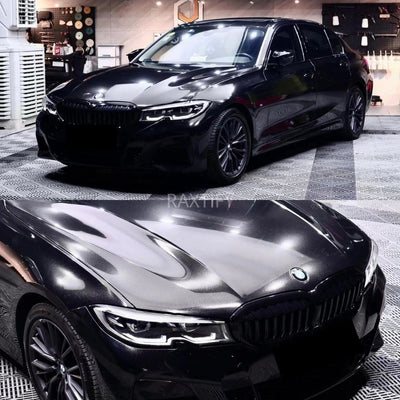Introduction 20% Car Window Tint
Is a hot and sultry summer in Virginia getting closer? Well, there is something on the preparation list you might forget: window tints! In advance, it is very important to check the State of Virginia's window tint laws before you attach these to your vehicle.
Virginia does allow vehicle window tinting, but the degree of darkness is controlled. This article tries to explain the tinting law in Virginia and if a 20% VLT tint is allowed.
The application of colored films on auto glass constitutes car window tints which function to maintain interior temperature coolness. The films provide safety by blocking sunrays and extreme heat. Among many, a very popular kind of tint is the 20% VLT tint, which offers great protection, style, and safety. However, many states, including that of Virginia, have window tinting laws.
Knowing them will keep you on the right side of the law. According to the Virginia laws, front side windows should admit more than 50% light, whereas back side and rear windows can admit more than 35% of the incoming lights. However, there are medical exemptions which allow for darker tints. Consult current guidelines or a professional before commencing your tinting job.
Selecting the right shade helps to bring out the beauty of your car and also has practical functions such as UV protecion, reducing heat. Take time in studying the market for your choice of window tinting because it will take you to better options, one brings improved comfort while driving in terms of appearance and legal aspects combined.
Is Window Tint Legal In Virginia?
It is legal to tint your car windows in Virginia, albeit with certain restrictions. Established in 1999, the rulings put limits on the percentage of VLT, which is the amount of light able to pass through the tint.
The amount of VLT allowed varies by state and vehicle type. For Virginia, the tint reflectivity must not be higher than 20%, and the tints shall not be red, yellow, or amber in color. If the back windows are tinted, then dual mirrors are a must.
If you have installed window tints on your vehicle in Virginia, you are required to apply stickers identifying the legal window tint. Check that your tint installer provides the appropriate stickers to prove that the tint meets the acceptable limits according to state laws.
Virginia Window Tint Laws Regarding 20% VLT
State laws in Virginia allow a 20% tint on rear and rear side windows for multi-purpose vehicles such as SUVs, trucks, or vans. While sedans in Virginia do not have the freedom to apply a 20% VLT tint on any of the windows, either at the front or back, there are numerous benefits associated with a 20% tint. To begin with, it allows considerable privacy while driving because the darker windows block the outsider's view into the car. Again, it enhances privacy, which contributes to safety whereby thieves are discouraged from accessing visible valuables.
In addition, the tint blocks 80% of the visible light; hence it keeps the interior of the car cooler and reduces the usage of air conditioning hence improves fuel efficiency. All these benefits make a 20 percent tint popular to many vehicle owners.
Allowed Window Tint Darkness In Virginia For Vehicles
Knowing and respecting specific window tint laws in Virginia will save you from fines. The laws differ in respect to your vehicle type. Here are some highlights:

- Front Windshield: The law allows a non-reflective tint extending up to 5 inches from the top of the windshield or above the manufacturer's AS-1 line.
- Front Side Windows: The tint on these should allow at least 50% of light through 50% VLT. Also, the reflectivity should be less than 20%.
- Rear Side Windows: The tint on the rear side windows should allow at least 35% of light through 35% VLT and should have a reflectivity of less than 20%.
- Rear Windshield: This too, should allow at least 35% of light through 35% VLT.
These factors will not only keep your vehicle compliant with the law but also ensure more safety since it keeps visibility at a decent level. For maximum quality and professional consultation on window tinting, rely on RAXTiFY's extensive line of products and skilled services.
Virginia Window Tint Law Darkness For SUV, Trucks And Vans-2026
- Front Windshield: You can have a non-reflective tint up to 5 inches at the top, above the manufacturer's AS-1 line. This is actually to help block glare from the sun to improve safe driving. If your vehicle does not have it from the factory, this is highly recommended to have applied since it is permitted under Virginia tint laws.
- Front Side Windows: The front side windows should allow more than 50% of light transmission, also called 50% VLT. The reflectivity allowed is up to 20%.
- Back Side Windows: In the case of back side windows, there are no limits concerning the darkness of tints. You can go for any darkness you want, with a limit in reflectivity of 20% as well.
- Rear Windshield: Similar to the back side windows, there are no limits on tint darkness for the rear windshield.
Note: The application of a non-reflective tint strip to the front windshield can seriously reduce sun glare and enhance safety of driving. In the case where your vehicle does not have such a factory-installed tint, it is a necessity for you to add it according to the Virginia laws.
Medical Exemptions According To Virginia Window Tint Laws
There are medical conditions considered to be an exception to the normal window tinting laws in Virginia. This then exempts it from the normal window tinting law on the front side windows, which should allow at least 50 percent of light.

It is necessary for applicants intending to apply for a medical exemption to submit a written statement written by a licensed physician in explaining the medical condition and the reason for requiring darker tint. Statements must be kept in the vehicle at all times and available upon request of the Department.
These would include acceptable medical conditions that need protection from the sun or bright lights, such as lupus, porphyria, xeroderma pigmentosum, Cockayne syndrome, albinism, Bloom syndrome, and severe allergic reactions to sunlight. Other chronic conditions that may possibly qualify in this category are migraines, epilepsy, and any other condition that might cause photosensitivity.
In particular, the medical exemption only extends to the front side windows. The rear side and rear windows shall remain subject to all tinting laws of Virginia.
More About Virginia Window Tint Laws
For tinted windows, installation of dual side mirrors is mandatory by state law. Coming to the colors of the tint, red, yellow, and amber colors are prohibited. The state of Virginia provides a 7% tolerance to the tint degree level. That means the actual tint applied can be 7% different from what is reflected on the tinting certification.

Unlike some states, there are no certifications required of film manufacturers in Virginia for the tint film they sell. On the other hand, violations of Virginia tinting laws are punished by fines and classes. The first offense is considered a Class 3 misdemeanor which may just be fined up to $500. The succeeding offenses are considered as Class 2 misdemeanors which may be punished by up to six months in jail, and/or a fine of up to $1000.
Keep in mind that illegal window tinting is not worth such heavy penalties. Make sure your vehicle tint meets the requirements of the law in Virginia to avoid all the above.
Different Kinds Of Window Tints
While choosing window tinting, it is important to consider the UV protection to be at least 99% blocked to protect skin health and interior fadings. It is also advised to go for a good quality tint that enhances comfort through interior heat reduction. In addition, verify that your selected state's regulations for light transmission and reflectivity allow that particular tint or not. Window tints are available in a variety of types, all with their favorable and not-so-favorable aspects. With all of them being legal according to the laws of states, here is a detailed list to help one make an appropriate choice.
1. Dyed Window Tint:
Pros: The main benefits of this type include affordability as well as anti-glare properties and attractive appearance.
Cons: The heat resistance of this tint is average while the color fades with time.
Best for: Budget-conscious drivers who value privacy and light protection without the highest quality features should choose this option.
2. Metalized Window Tint:
Pros: The combination of durability with high heat-blocking properties and increased window strength delivers this product variant's main benefits.
Cons: It will disrupt GPS and cell phone signals and the price exceeds that of dyed tints.
Best for: This option suits people who need durable and effective heat-blocking capabilities.
3. Carbon Window Tint:
Pros: Golden tints do not fade through time and perform well at blocking heat while giving windows a flat appearance.
Cons: The cost of metalized tints stands higher than both dyed and metalized tints.
Best for: The product suits drivers who need robust tints able to keep cars cooler while maintaining lasting durability throughout the years.
4. Ceramic Window Tint:
Pros: High-quality heat and UV blockage, does not interfere with any electronics, visibility maintained.
Cons: Highest cost among tints.
Best for: Those who can afford nothing but the best protection and performance.
Looking for the Best Window Tint Near Me? Choose RAXTiFY
Looking to find the best window tint near me? RAXTiFY is your reliable tinting company in Virginia. Our legal and professional installations are strictly in line with the laws of Virginia tint (50 percent VLT on the front in windows and 35 percent on the rear) in order to keep your car fashionable and inspection-ready.
What RAXTiFY Offers:
Law-compliant installation to help you avoid tickets or inspection issues
High-quality films with UV protection, heat rejection, and glare reduction
Multiple tint options including 50%, 35%, ceramic, and color shift tints
Fast service and affordable pricing tailored to your vehicle
FAQ Virginia Window Tint Law
Q1. What is the legal limit for window tint in Virginia?
A: In Virginia, the legal limit for window tint on passenger vehicles is 50% VLT for the front side windows and any darkness for the rear side and rear windows.
Q2. What is the consequence if my window tint is too dark in Virginia?
A: Yes, vehicles whose window tint is not within the legal requirements of Virginia get fined, with requirements to take off or lighten their tints to conform with state regulations.
Q3. Is there any medical exemption to keep darker window tints in Virginia?
A: Yes, in Virginia, there are medical exemptions, but it's pretty procedural, which involves documentation through a licensed physician.
Q4. Are there any exemptions to the tint laws of Virginia?
A: Yes, exceptions do include vehicles registered out of state with different tint regulations, provided they conform with their home state's regulations while driving through the state of Virginia.
Know The Virginia Window Tint Laws
The right window tint shade enables visibility into multiple dimensions regarding cosmetic aesthetics and practical benefits for your car's performance. First check the legal rules about window tints in Virginia since this knowledge is essential before making your choice. RAXTiFY presents a variety of high-quality films which satisfy the VLT criteria of Virginia. The ideal car window tint awaits you in our current catalog display.








